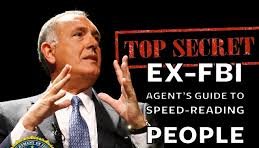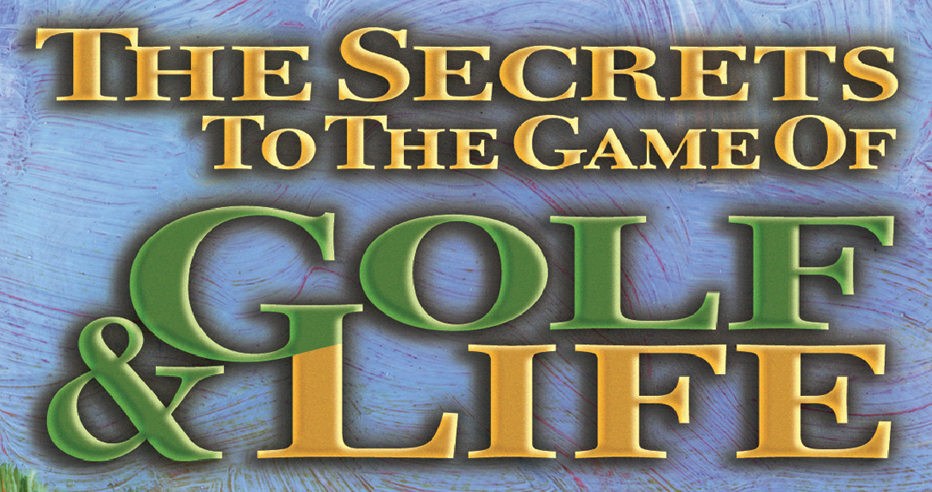The Making of a Poker Player – A Telling Factor –Agent Joe Navarro Applies FBI Techniques to Poker
By Leonard Finkel
 I must admit that some time I used to allocate to golf is now devoted to poker. I’ve read quite a few books including “Read’em and Reap” by Joe Navarro. In his book, Navarro, a former FBI agent whose specialty was interrogation and the ability to read people and tell if they were lying or telling the truth, now teaches poker players how to observe and interpret behavior at the poker table. While he continues to train FBI agents, Secret Service agents and security personnel worldwide, his new avocation also includes seminars and private tutoring of poker players including the likes of 13- time World Series of Poker bracelet winner Phil Hellmuth.
I must admit that some time I used to allocate to golf is now devoted to poker. I’ve read quite a few books including “Read’em and Reap” by Joe Navarro. In his book, Navarro, a former FBI agent whose specialty was interrogation and the ability to read people and tell if they were lying or telling the truth, now teaches poker players how to observe and interpret behavior at the poker table. While he continues to train FBI agents, Secret Service agents and security personnel worldwide, his new avocation also includes seminars and private tutoring of poker players including the likes of 13- time World Series of Poker bracelet winner Phil Hellmuth.
Navarro accidentally stumbled into the poker world when he appeared as a member of a panel of experts on the Discovery Channel and a chance meeting with world-class poker champion Annie Duke. The panel consisted of experts from various fields as well as a lie detector. The goal was to determine who best could tell if someone was lying or telling the truth. The poker player and FBI agent were by far the most accurate. Navarro became fascinated with poker.
Although I read his book before attending the seminar, the information really came to life for me when I saw it in played out in person. Reading the book though was also excellent preparation for what the seminar would deliver. And it did deliver! Before I get into the seminar itself, I just have to talk about my poker session the following day at Caesars Palace. It was eye-opening, to say the least.
Feeling fresh on Sunday after a full-day at the seminar, I put what I learned to use and was able to identify and validate tells in four separate players. The first was a young hotshot who hugged himself every time he bluffed. I was able to validate this behavior because he loved to show his bluffs. I was later in the hand with him when he raised pre-flop and I was the only caller, with pocket deuces. The flop came 6-7-8 rainbow (three different suits). The initial raiser led out with a bet of $30 and proceeded to hug himself once again. I would normally fold my deuces in this situation but I knew he was bluffing. I raised. The hotshot angrily threw away his cards. I would never have made that move before attending the seminar. After all, the only hand I could beat was a bluff
The second tell occurred when the player to my right steepled his hands up (a high confidence tell) when a third spade hit on the river (the last of five face up cards). I knew he had a big hand, and he wound up having the ace-high flush. A player with a straight led into him and the flush went all in (bet all his chips). Again, I knew what he had. Reading his tell, it was obvious. The third mannerism I was able to pick off was a player that stroked his chip stack when he had a big hand. If he bet but didn’t stroke his chip stack, his hand was marginal.
The final tell was a bit confusing and fooled me the first time. You will learn at the seminar that an action only indicates stress and not whether someone holds a strong or weak hand. One player started to rub his face and then he slumped down and leaned forward. He went all in. I was certain he was bluffing but he turned over a full house. Later, he did the same thing. He started rubbing his face, then stooped down and leaned forward. He once again showed a big hand. I confirmed that this was his behavior when he had a very strong hand. When you can be certain that someone has a very strong hand, you know to avoid them. I wound up having a very profitable day.
The morning of the seminar started at 8 a.m. with registration and a nice breakfast. During this hour, Joe Navarro took the opportunity to mingle and chat with the 50 plus seminar attendees. What he was really doing though, was observing our behavior patterns. When the seminar began, he awed the crowd by accurately predicting how several of us would respond to given situations. The funniest prediction was that one of the attendee’s ears would turn red if someone approached him too closely. That’s exactly what happened when Joe stood so close that he was almost rubbing against this person, his ears actually did turn bright red. That’s what we’re here to learn at this poker seminar, how to observe people’s behavior and predict their actions. In other words, when an opponent makes a specific gesture, you can predict with high confidence that he’s either bluffing or he has a strong hand. That type of information gives you a tremendous edge.
A myriad of topics were covered including what parts of the body are most reliable when gauging behavior patterns. We learned the types of behavior that men are more likely to exhibit and those that are specifically appropriate only to women. One of the most fascinating discoveries I made was that while all of the top professional poker players are experts at reading their opponents behavioral patterns, they can be oblivious to their own. Throughout the day, examples were shown of many of the top pros exhibiting easy to read behavior. As I mentioned earlier, Phil Hellmuth used to hug himself when he was bluffing before working with Navarro. Joe explained that these behavior patterns are result of limbic system responses that evolved over millions of years and kept the human race alive. These behaviors are instinctual. The hugging response initiates while we are still in the womb. When explaining behavior patterns, Navarro often uses his FBI background to detail why and how a specific behavior comes to light and then relates how to use that information at the poker table.
One of the day’s highlights was that under Joe’s guidance and observance, we actually went down to Caesar’s poker room and played real cash games among ourselves. A secluded, private area in the poker room was set aside for seminar participants. Most of the attendees participated and we wound up with five games at various stakes. Navarro believed it was important for us to be playing for real money to enable him to observe our normal behaviors and tells under the same pressure we would regularly be under. We played for about two hours and Joe was constantly giving us feedback and recommendations to improve our performance while occasionally pulling players away from the tables to point out specific deficiencies or obvious tells.
Early in this session at my table, I was able to spot a tell in a young, probably not very experienced player that would later help me and haunt him. I commented to him that I’d picked off a tell he had, but I would wait until later to tell him what it was. He called a raise with what I felt was a marginal hand, because when he made the call, he grimaced and rolled his eyes. Later in the session I raised $15 with a pair of tens and everyone else folded to my young, inexperienced buddy. A player to my left announced to the table that he thought he saw a tell in me and he felt I was weak and bluffing. The young player raised to $50. I looked him square in the eye and asked him if he wanted me to call. With false bravado he said yes, I should call him, and then proceeded to grimace and roll his eyes. I knew he was bluffing and put all my chips in the pot. He felt he had no choice but to call my raise, which again was a mistake, and wound up losing the rest of his chips. Score another victory for the ability to read people’s behavioral patterns.
I am very excited because I know that as I expand my observation powers, I will gain a distinct advantage over my opposition. The benefits can be enormous. I believe that anyone that plays poker seriously or plays fairly often or for even moderate stakes, is a fool if he doesn’t take this seminar. For additional information visit http://www.jnforensics.com/
